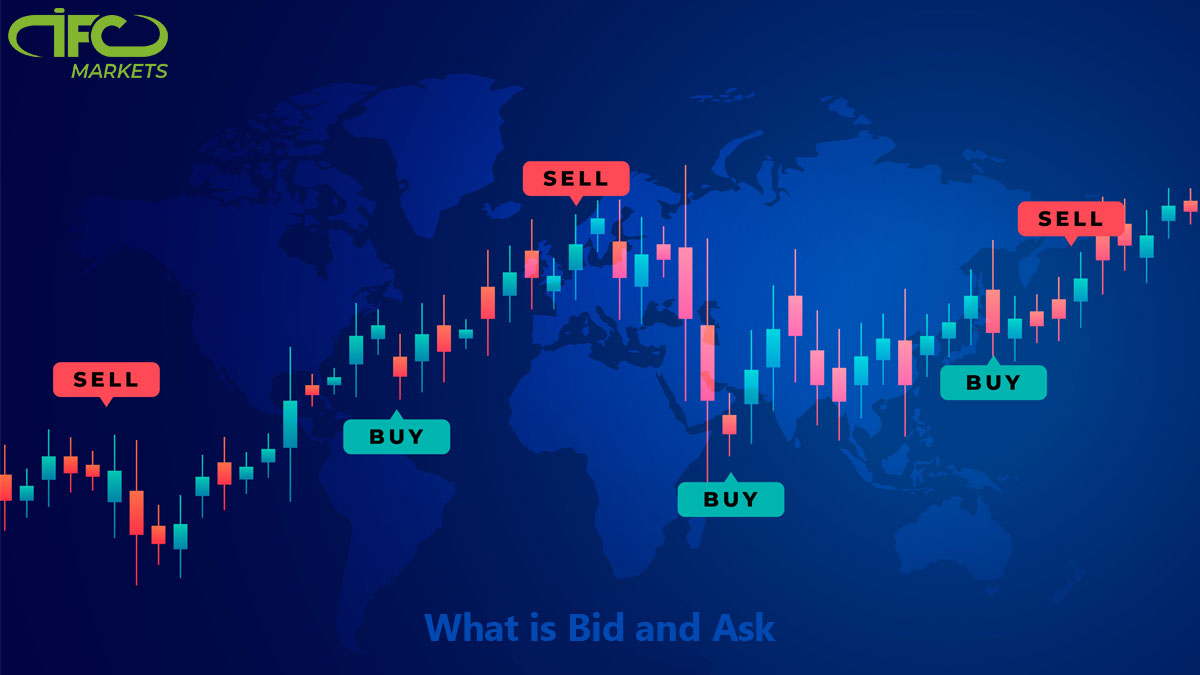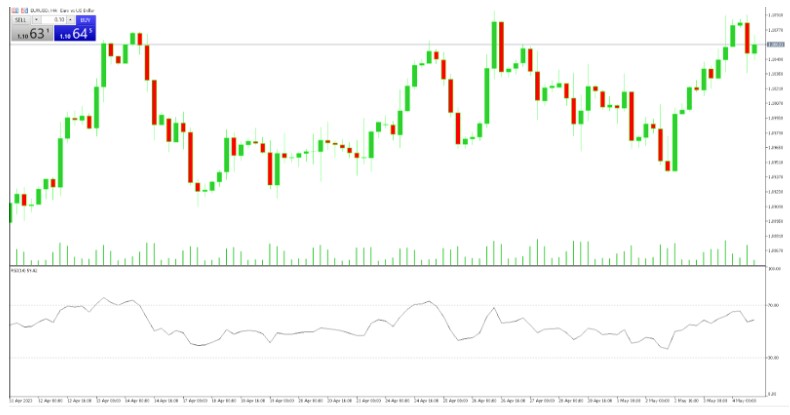- Education
- Introduction to Trading
- What is Bid and Ask
What is Bid and Ask - Bid and Ask Definition
In the world of trading, understanding the bid and ask is essential to success. Whether you're trading stocks, forex, or any other asset, the bid and ask represent the buying and selling process. In this article, we'll explore what bid and ask are, how they work, and why they're important to trading.

KEY TAKEAWAYS
- Understanding the bid and ask is essential to successful trading.
- The bid represents the highest price a buyer is willing to pay, while the ask represents the lowest price a seller is willing to sell.
- The difference between the bid and ask price is known as the bid-ask spread, which represents the transaction cost of trading.
- It's important to consider the bid-ask spread when making trading decisions.
- Traders can use bid and ask prices to make informed trading decisions by looking at the order book.
- Bid and ask prices can be influenced by a range of factors, such as economic data releases, geopolitical events, and market sentiment.
- By considering the bid-ask spread and monitoring market conditions, traders can identify trading opportunities and manage risk more effectively.
What is Bid and Ask
The bid and ask are the prices that buyers and sellers are willing to pay for a particular asset or security. The bid represents the highest price that a buyer is willing to pay, while the ask represents the lowest price that a seller is willing to sell.
For example, if you're looking to buy Apple stock, you'll see the bid and ask prices listed. Let's say the bid is $167, and the ask is $168. If you want to buy the stock, you'll have to pay the ask price of $168. On the other hand, if you're looking to sell the stock, you'll only receive the bid price of $167.
Understanding Bid and Ask
If you're new to trading and want to get started, one of the best things you can do is download MetaTrader 4. The bid and ask can be confusing for new traders, but it's important to understand them to make informed trading decisions. Let's take a closer look at how bid and ask work.
The bid and ask can be confusing for new traders, but it's important to understand them to make informed trading decisions.
Let's take a closer look at how bid and ask work.
When you place an order to buy or sell a stock, your order is matched with another order on the opposite side of the transaction. If you're buying, your order is matched with a sell order, and if you're selling, your order is matched with a buy order.
The price at which the order is matched is the bid or ask price, depending on whether you're buying or selling.
Difference Between Bid and Ask Price
Understanding the bid and ask prices and the bid-ask spread is crucial for making informed trading decisions, as it helps you calculate the transaction cost of a trade and determine whether the potential profit outweighs the cost.
The difference between the bid and ask price is known as the bid-ask spread. The bid-ask spread represents the transaction cost of trading and is an important factor to consider when making trading decisions. The tighter the bid-ask spread, the lower the transaction cost, making it more attractive to trade.
Let's go back to our previous example. If the bid is $50 and the ask is $51, the bid-ask spread is $1. If you want to buy the stock, you'll have to pay the ask price of $51, which is $1 more than the bid price of $50. The $1 difference is the transaction cost, and it's important to consider when deciding whether to make the trade.
Bid and Ask Spread
In forex trading market bid-ask spread can vary depending on the asset or security being traded, the market conditions, and the volume of trades. In forex trading, the bid-ask spread can be as low as 0.1 pips, while for stocks, it can range from a few cents to several dollars.
For example,

Let's say you're trading a popular forex pair like EUR/USD. The bid price is 1.1063, and the ask price is 1.1064. The bid-ask spread is 0.0001 pips, making it a very tight spread. This means that the transaction cost of trading this pair is very low, making it more attractive to traders.
On the other hand, if you're trading a less liquid stock, the bid-ask spread may be wider. Let's say you're trading a small-cap stock that's not very popular. The bid price is $86.3188, and the ask price is $87.0688 The bid-ask spread is $0.75, making it a wider spread.
This means that the transaction cost of trading this stock is higher, making it less attractive to traders.
Factors Influencing Bid and Ask Prices
Bid and ask prices are not static values that remain unchanged over time. Rather, they can fluctuate rapidly and be influenced by a variety of factors, both internal and external to the market. Economic data releases are among the most significant factors that can impact bid and ask prices. Economic indicators such as GDP, employment rates, and inflation can significantly impact market sentiment and the demand for certain assets, which in turn can impact the bid and ask prices.
- Economic data releases: Let's say the U.S. Federal Reserve releases a report indicating that the country's GDP has grown more than expected in the last quarter. This could lead to an increase in demand for the U.S. dollar, causing bid and ask prices for currency pairs that involve the dollar to rise. Alternatively, if the report indicates that the GDP growth is slower than expected, it could lead to a decrease in demand for the dollar and lower bid and ask prices.
- Geopolitical events: If there's a conflict between two countries that rely heavily on each other's imports and exports, it can cause fluctuations in currency values. For instance, if there's a trade dispute between the United States and China, the Chinese yuan's value could drop, causing an increase in the bid and ask prices for USD/CNY currency pairs.
- Market sentiment: Let's say a major news outlet releases a report indicating that the global economy is likely to experience a slowdown in the next quarter. This could cause investors to become more cautious about their investments, leading to a decrease in demand for riskier assets like stocks and an increase in demand for safer assets like bonds. This shift in demand could cause bid and ask prices for stocks and bonds to fluctuate accordingly.
It's important to note that bid and ask prices are not independent of one another. Rather, they are interdependent and can impact each other. For example, if there is a sudden surge in demand for a particular asset, the ask price may increase as sellers become less willing to sell at lower prices. This, in turn, can cause the bid price to increase as buyers become more willing to pay a higher price to acquire the asset.
So, bid and ask prices can be influenced by a wide range of factors, both internal and external to the market. By staying informed about economic data releases, geopolitical events, and market sentiment, traders can gain a better understanding of the forces driving bid and ask prices and make more informed trading decisions.
Bottom Line on What is Bid and Ask
In conclusion, understanding the bid and ask is essential to successful trading. The bid represents the highest price a buyer is willing to pay, while the ask represents the lowest price a seller is willing to sell. The difference between the bid and ask price is known as the bid-ask spread, which represents the transaction cost of trading.
It's important to consider the bid-ask spread when making trading decisions, as a tighter spread can make trading more attractive due to lower transaction costs. However, it's worth noting that a wider spread may not always be a bad thing. For example, in highly volatile markets, a wider spread can provide a level of protection against sudden price movements.
Traders can use bid and ask prices to make informed trading decisions, by looking at the order book to see the bid and ask prices, as well as the volume of orders at each price level. This information can help traders determine the market sentiment and make more accurate predictions about price movements.
Also worth mentioning that bid and ask prices can be influenced by a range of factors, such as economic data releases, geopolitical events, and market sentiment. As such, it's important to stay up to date with the latest news and developments that could impact the markets.
In conclusion, the bid and ask are fundamental concepts in trading, and understanding how they work can help traders make more informed decisions. By considering the bid-ask spread and monitoring market conditions, traders can identify trading opportunities and manage risk more effectively.

